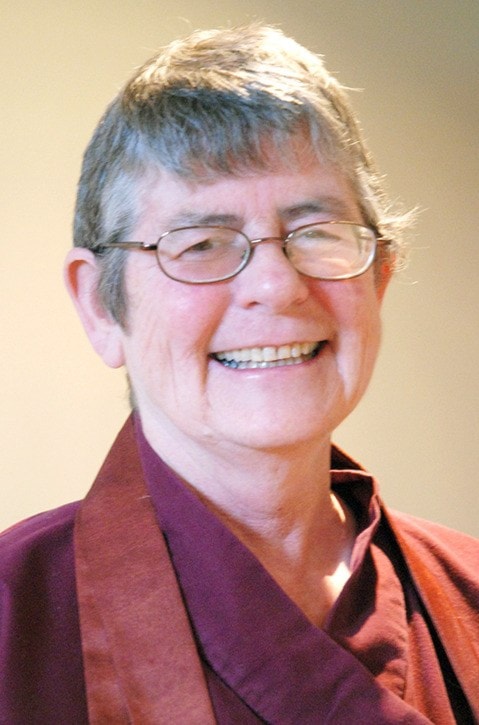In his essay, “Mountains and Rivers Sutra, 13th century Zen master Eihei Dogen takes some time to reflect on the different ways that different beings see mountains and waters. He says, “Some beings see water as a jeweled ornament, but they do not regard jeweled ornaments as water.” He is being totally literal here. It really is true that some people can look at water and see it as a jeweled ornament. When I stand on the deck of my Kootenay Lake hermitage and look out at the sun reflecting off the surface ripples, I see water as a jeweled ornament. And when a rainbow trout breaks the surface and hangs briefly in the air, it too sees the sun glinting off the surface, but that trout does not see water as a jeweled ornament. Nor do they see what I call water. It is only us humans who can see water as jeweled ornaments.
So is what I am looking at from the deck of my hermitage a jeweled ornament, or is it water? It depends on who is looking. Another person might see the same water as wondrous blossoms; someone who is very ill might see it as a raging fire. A white sturgeon swimming deep along the lake bottom might see water as a palace or a pavilion that has no boundaries. When I snorkel along the surface and see the lake plants covering different levels of rocks, I see water as a mountain range or a forest.
Dogen is reminding us that depending on causes and conditions, that is, on karma, we experience the world in our own way. We humans are so focused on ourselves that we don’t realize that the world we see is not necessarily the world that exists; it is simply the world in concert with our own unique sensory apparatus and conditioned expectations. An ant crawling across the floor does not see a room full of people or imagine that our lives are more precious than the lives of ants.
So the point of all this is that when we loosen the grip on our own point of view and open the hand of thought, we can really understand that what we think is true is nothing more than a point of view. It is not a final description the world. What we experience is simply the way the world appears in our lives right now. As we learn and change, our view of the world changes. If we truly realize this and refrain from insisting that our point of view is the only correct point of view, we can open to a whole new vision of the world.
Suggested practice: The next time you are completely immersed in a point of view that you believe to be the absolute truth about a given situation, stop, open your mind and consider another way of looking at the situation. Loosen your death grip on your conditioned opinions.
Kuya Minogue is the resident teacher at Sakura-ji, Creston’s zendo. This column is part of a long essay on an essay by 13th century Zen master Eihei Dogen and is inspired by the teaching of Norman Fischer. For more information, Minogue can be reached at 250-428-6500, and previous columns are available at www.zenwords.net.
